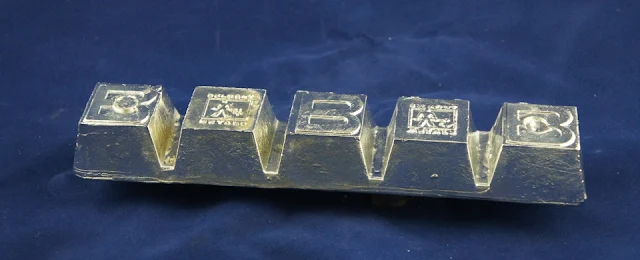An alloy is a mixture of metals or a mixture of metal and another element. White metal alloys are those which are light-colored and generally have a lead or tin base. These alloys are also known as Babbitt metal, or bearing metal, a term which is generally preferred over ‘white metals’. Babbitt metal can be one of several alloys used as a bearing surface in a plain bearing.
Babbitt metal was first created by Isaac Babbitt, from whom it takes its name, in 1839. The original formula for his bearing metal was 89.3% tin, 7.1% antimony and 3.6% copper. This formula is still used by some manufacturers today and marketed as ‘Genuine Babbitt’, or ASTM B-23 Grade 2 Babbitt. It is a soft, white non-ferrous alloy that is used to provide a bearing surface. Bearings are used in engines to support moving mechanical parts and protect them from frictional degradation. Babbitt metal also has properties that help it reduce friction which makes it a good material for use in a plain bearing.
Babbitt metal is soft and can be easily damaged if not treated correctly. This would make it seem unsuitable for use as a bearing surface, however, the structure of the alloy is made up of small, hard crystals which are dispersed in a matrix of softer alloy. This means that as the bearing wears down, the harder crystal is exposed and a path for the lubricant is provided.
Babbitt bearings work by providing a low coefficient of friction, principally achieved by 2 means. First, there is the fact that the bearing itself has a low coefficient of friction so even without lubrication, a Babbitt bearing will have much less friction than another metal such as steel or cast iron. However, by adding lubrication Babbitt bearings can have a significantly low coefficient of friction – even lower than ball bearings.
Until the mid-1950s poured Babbitt bearings were a common feature of automotive appliances. Tin-based Babbitts were commonly used as they could stand up to the impact of the connecting rods and crankshaft. Babbitt bearings were also commonly used in factories, before the invention of low-cost electrical motors, to distribute power throughout via a central engine. Today, Babbitt is more commonly used as a thin layer covering bearings made of replaceable steel so that it still acts as a bearing surface.
So these topics are explained in Babbitt Material PPT Report with illustrated images. If you want to download the Babbitt Material PPT Report then simply click the link given below. There is also given the preview and link Babbitt Material PPT Report uploaded in Youtube. All the images used are copyrighted to the owners of the respective websites mentioned in the Babbitt Material PPT Report reference slide.


0 comments